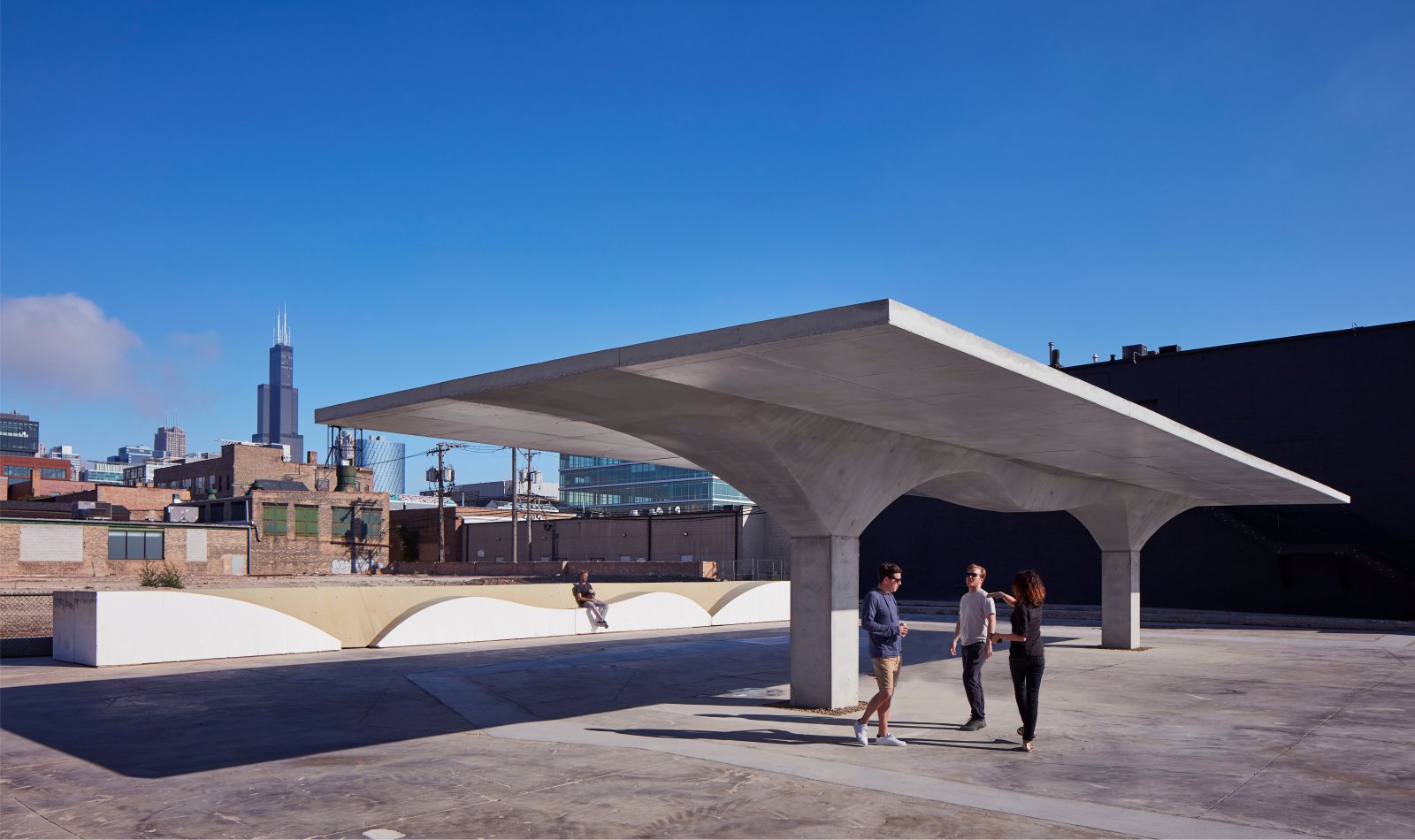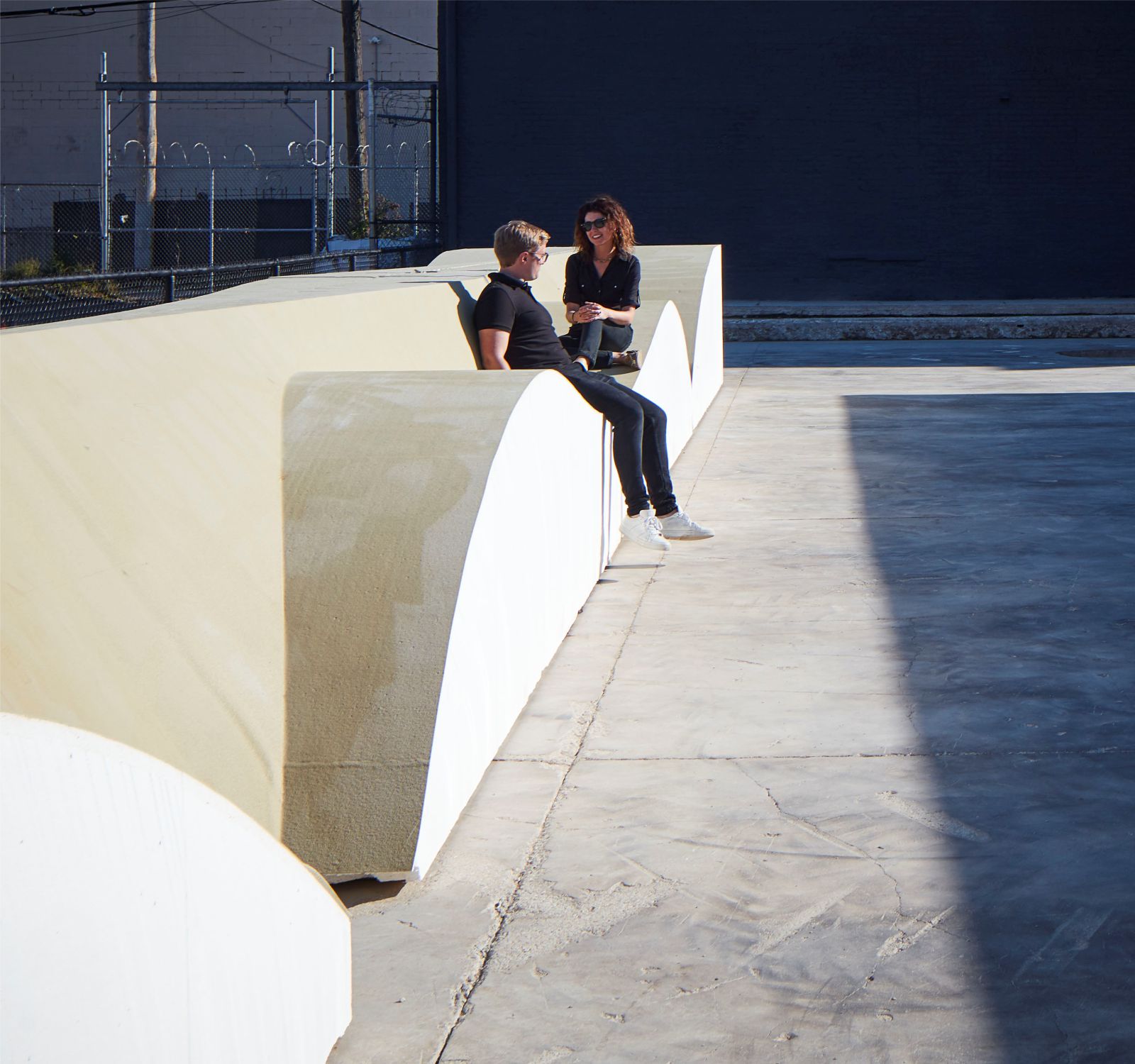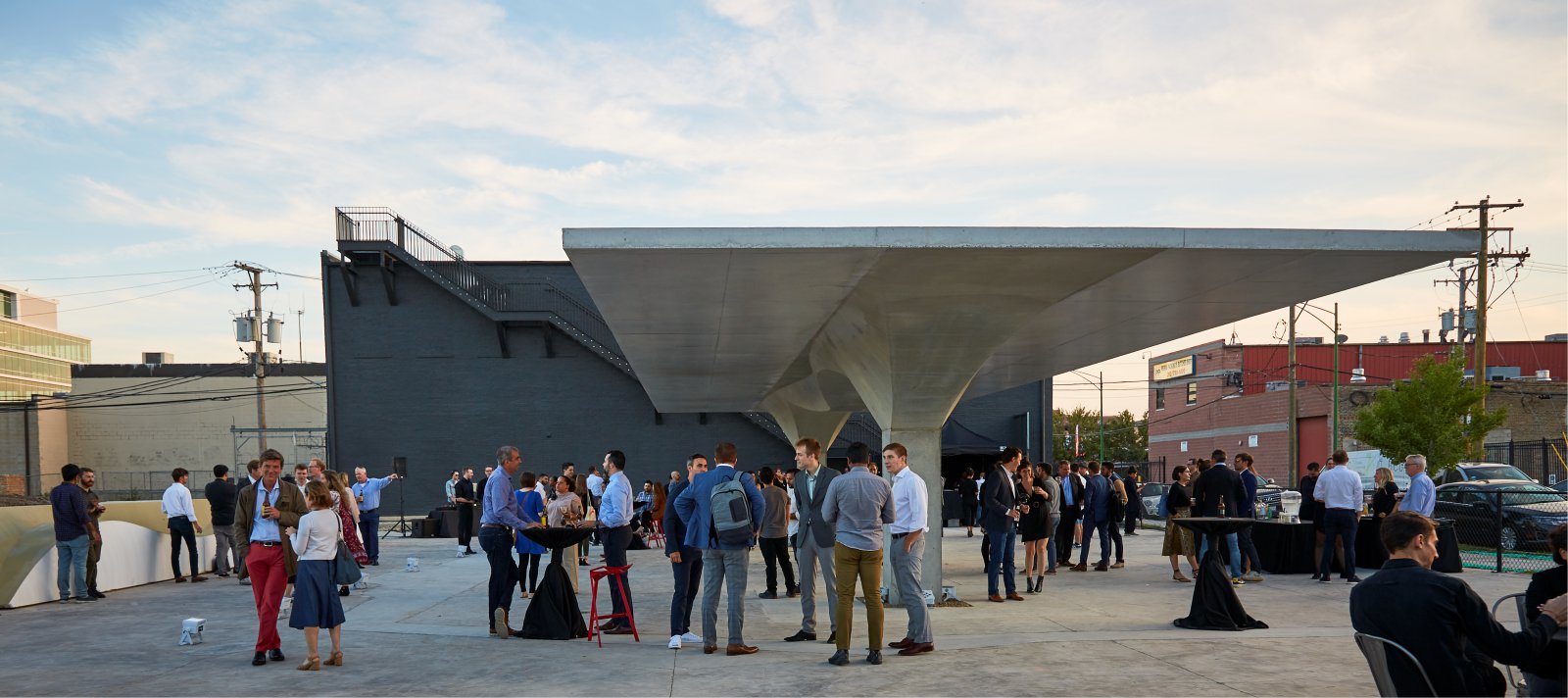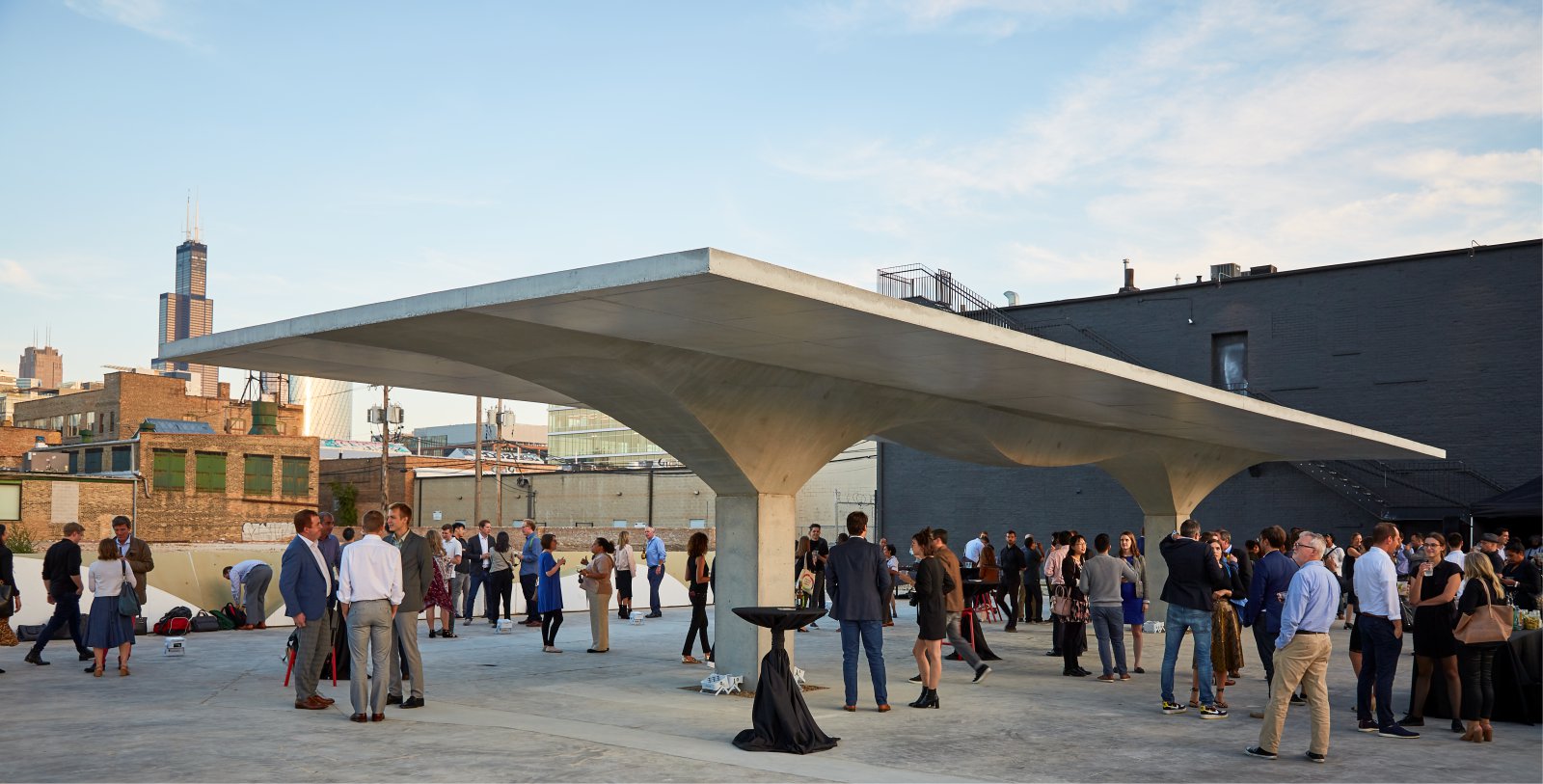SOM unveiled the groundbreaking work of its interdisciplinary practice with Stereoform Slab, a concrete pavilion constructed in Chicago’s West Loop. Presented in partnership with the 2019 Chicago Architecture Biennial, this pavilion is a to-scale prototype of a future building system made using advanced robotic fabrication techniques; it is simultaneously an activation and an exhibition that illustrates a design method that reduces the carbon footprint of concrete construction.
The pavilion replicates and abstracts a single-story concrete bay found in high-rise construction to create a simple architectural expression. Removed from its typical context, the structure exemplifies how digital fabrication can be leveraged in the building industry. Stereoform Slab envisions a more sustainable alternative to the ubiquitous urban concrete slab—the most common element in contemporary construction. SOM’s research reveals that 40-60% of a building’s carbon footprint results from the development of the concrete slab itself.
With this sustainable fabrication technique of concrete formwork using advanced robotics, the amount of material used and waste generated is minimized, with an approach that uses 20% less concrete than a conventional system, and results in a 20% carbon reduction. “This pavilion demonstrates the exciting potential for design, technology, and building collaborations to make a significant impact on the way we approach large-scale construction.
This is particularly important as we consider the ongoing development of urban environments and therefore, the increasingly pressing need for sustainable solutions,” explained Scott Duncan, SOM Design Partner. “The design of Stereoform Slab expresses a more intelligent allocation of material, evocative of forms in nature. When applied to the entirety of the built environment, this technology can pave the way to a more expressive, sustainable, and innovative future of architecture.”
In addition, SOM has partnered with the Chicago Athletic Association to install the Conversation Bench, a continuous surface that meanders through the iconic Drawing Room at the Chicago Athletic Association, connecting all people in a singular gesture. This unified seat is created from one surface, one volume, and one movement of a robotic arm—a product of implicit form design and no-waste manufacture.
The design provides a similar function as traditional furniture, but in a novel way that uniquely connects people to the space and to one another, and organically elevates the way people interact. Stereoform Slab and the Conversation Bench will create urban interventions in the city that are shaped by new methods of digital fabrication within the fields of construction and architectural design, and establish a temporary space for civic engagement.
Not only do these works illustrate possibilities for the future of construction, they also create inclusive civic spaces for visitors to reimagine the ways in which we engage with each other and with the built and natural world. Throughout the biennial, programming will be developed around the exhibition to further demonstrate and inform the public on how this advanced, sustainable design technique can change the building industry on a global scale.
The pavilion was designed by SOM’s interdisciplinary research team, and realized through industry partnerships with leading organizations including McHugh Construction, real estate investment and development firm Sterling Bay, Denmark-based Odico Construction Robotics, and Autodesk, an innovator in generative design implementation. Source and photos Courtesy of SOM.













